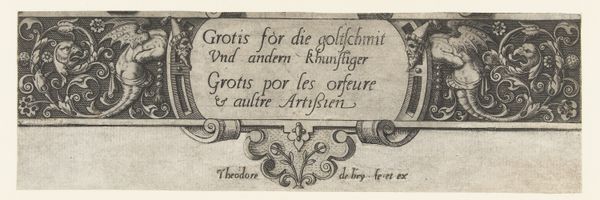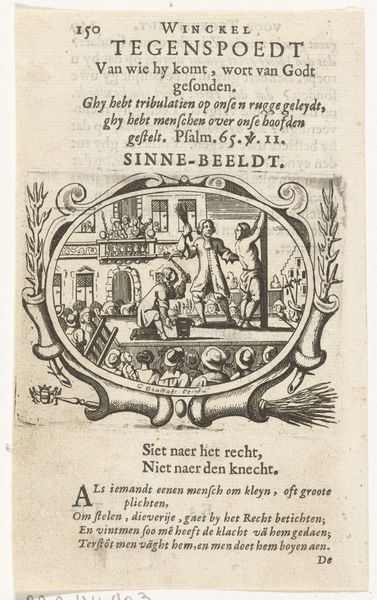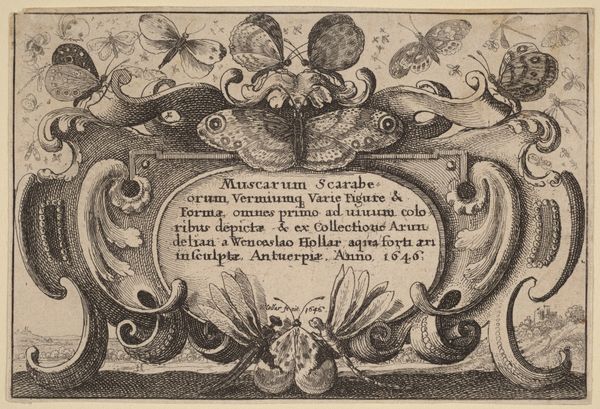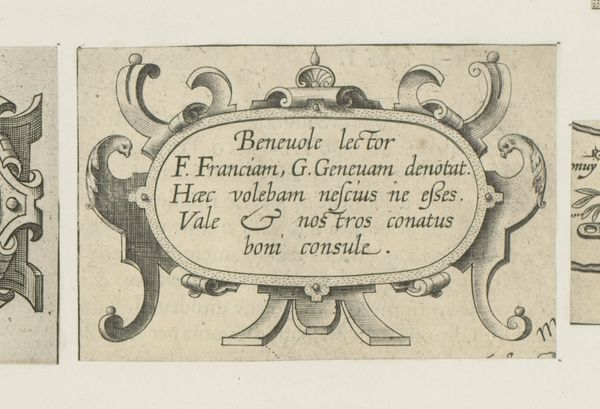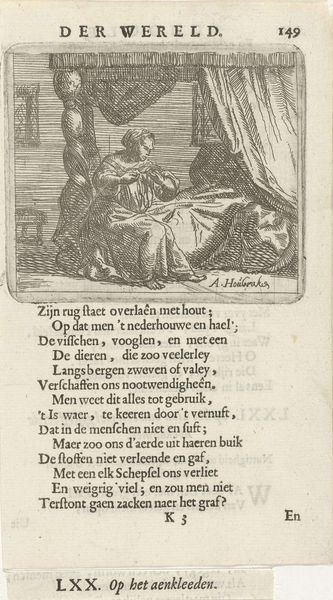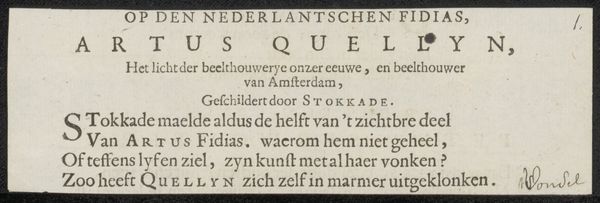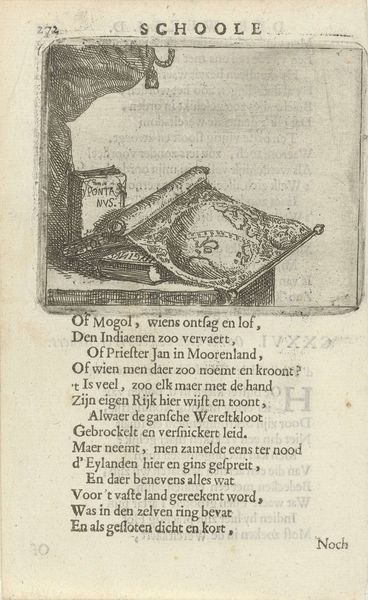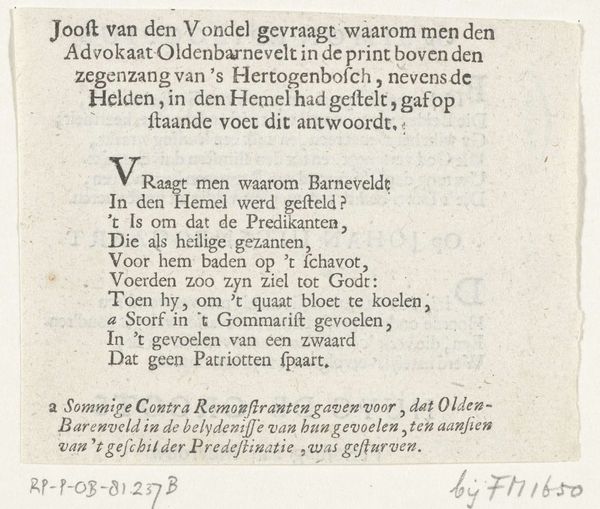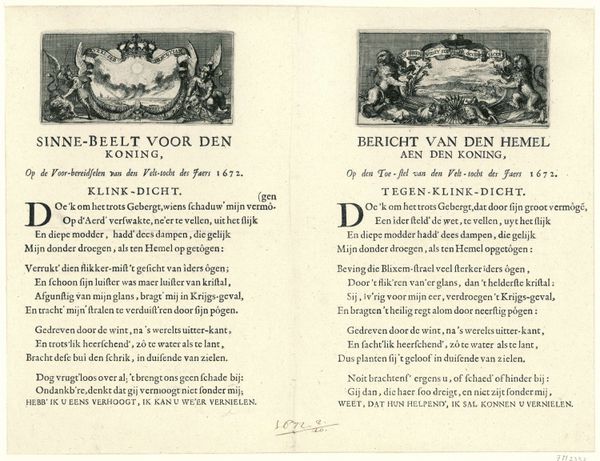
print, engraving
#
portrait
#
baroque
#
dutch-golden-age
# print
#
pen sketch
#
old engraving style
#
history-painting
#
engraving
#
calligraphy
Dimensions: height 56 mm, width 219 mm
Copyright: Rijks Museum: Open Domain
Curator: This engaging engraving, dating from around 1721-1723, presents a historical tableau, titled "Twee penningen ter ere van burgemeester Pieter van der Werff, 1604." It appears to be a homage to Pieter Adriaansz. van der Werff, a significant figure in Dutch history. Editor: Oh, I love the quaintness! It feels like stumbling upon a cherished old book in a forgotten corner of a library. But that stark, linear style… it does leave you feeling somewhat detached, doesn’t it? Curator: The detachment, I think, is intentional. The engraver, whose name remains unknown to us, prioritizes clarity of line and form, allowing the viewer to dissect the composition, rather than be swept away by emotion. Consider the composition; four medallions are presented, and attention should be given to their placement and relation to the other surrounding medallions. Editor: Right. The dual portraits of van der Werff in profile. Each has that stiff 17th-century solemnity. Then the central medallions—look closer and you can discern the quaint skyline nestled below all that calligraphy... Curator: Indeed. The inclusion of calligraphy adds to its complexity; in those central medallions, two verses, likely written in the Dutch vernacular, function almost as mini historical records and provide essential details regarding the life and accomplishments of van der Werff. Notice how the inscriptions act to historicize his legacy through textual emphasis and visual design. Editor: Van der Werff, clearly, was quite the local hero. Based on the inscription and imagery, I sense resilience, civic duty, and perhaps a touch of the stoic. He braved some fiery ordeals for “the freedom of the land.” It really echoes that time! Curator: Precisely. This work exists as more than a simple commemorative artwork. The careful attention paid to line and text serves a larger project which commemorates not just an individual, but civic responsibility in service to national ideals of resilience and courage, and this elevates its significance. Editor: Well, I came looking for something sentimental and found this slice of history—stark, poised, and perfect for a history book. Maybe "detachment" is the wrong word. Call it 'contained intensity.' I walked away feeling moved after all. Curator: Agreed. The 'contained intensity' stems from that rigorous aesthetic, and our focus on those qualities yields its complex beauty. This engraving achieves something rare: a stoic monument to civic devotion that still resonates across centuries.
Comments
No comments
Be the first to comment and join the conversation on the ultimate creative platform.
